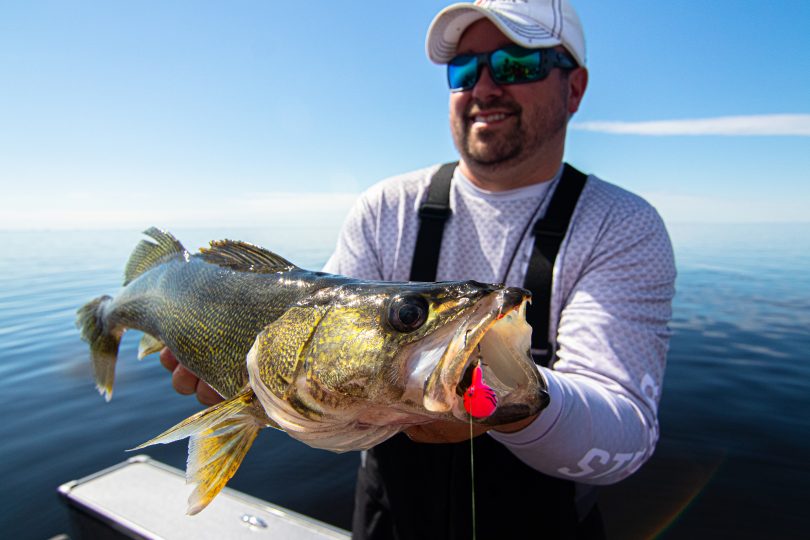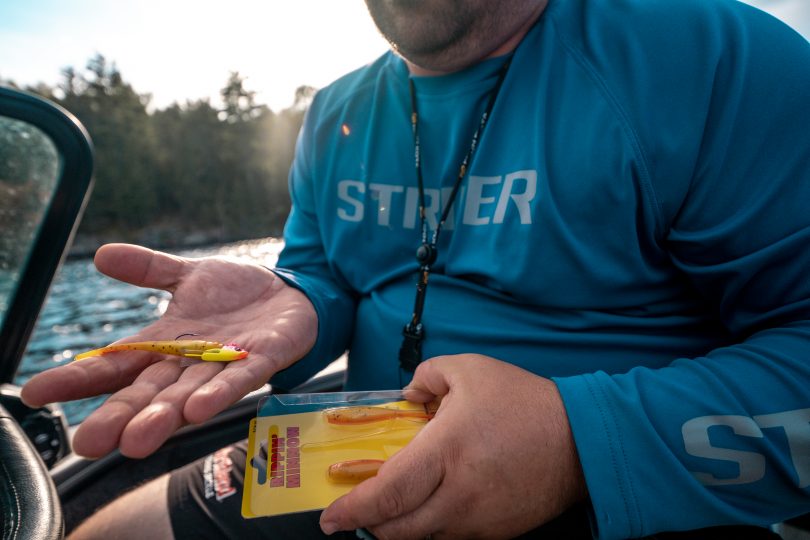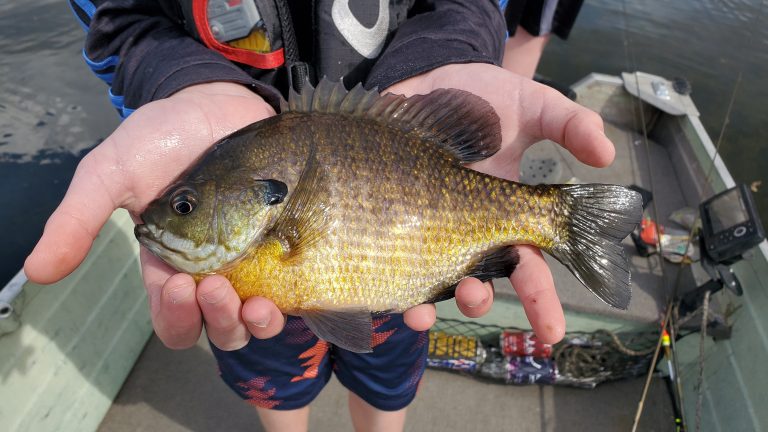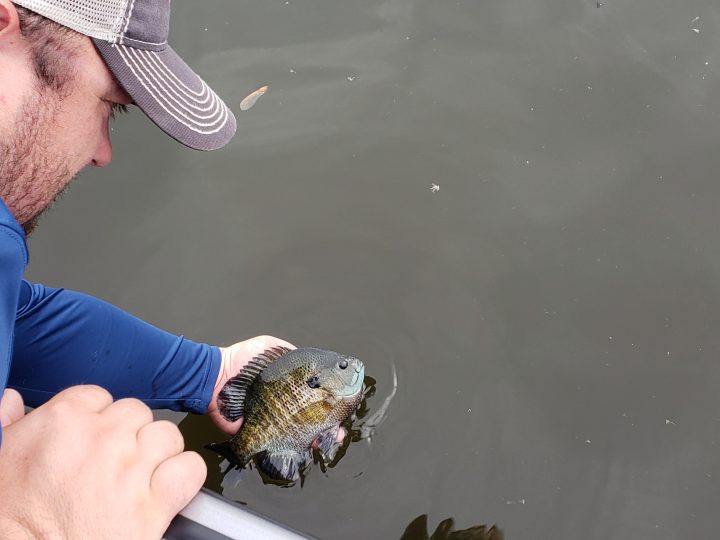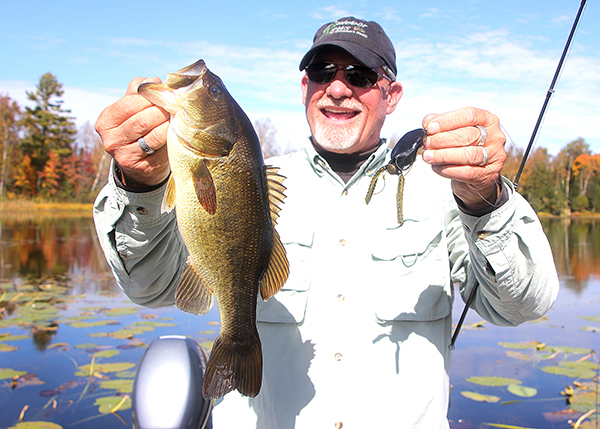Project protects pike spawning habitat on Lake of the Woods
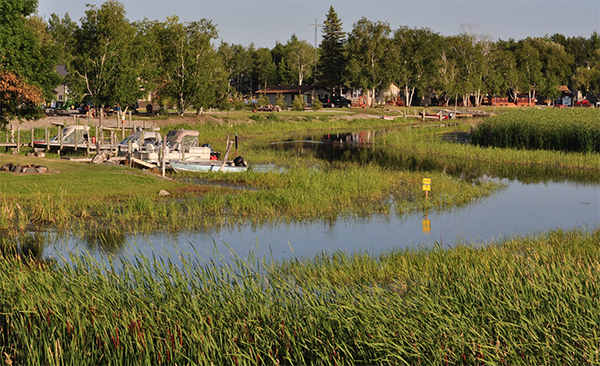
by OutdoorsNews Staff
BAUDETTE — A small stretch of ditch could make a big difference for Lake of the Woods boat access via Bostic Bay and for northern pike spawning habitat in connected waters. Known as a world-class walleye, northern pike and sturgeon fishery, the lake on the U.S.-Canada border supports nearly 60 Minnesota resorts.
“It’s known as one of the big walleye lakes in Minnesota,” said Phil Talmage, the Minnesota Department of Natural Resources’ Baudette-based area fisheries manager.
With annual angling hours at about 3 million in recent years, Lake of the Woods is one of the state’s top fishing destinations.
“The other thing that makes Lake of the Woods unique is that we have long-lived fish that grow to be big. So we have probably one of the best chances of an angler catching up with a trophy-sized walleye throughout the entire state,” Talmage said.
Lake of the Woods Soil & Water Conservation District’s $350,000 channel stabilization on 2.75 miles of Judicial Ditch 28, which finished late this summer, was designed to curb bank erosion, improve water quality and protect fish passage to shallow, grassy spawning sites.
The sedimentation and cattail growth, which accelerated after a ditch clean-out 40 years ago, have, over time, constricted passage on once-open Bostic Bay to a 20-foot-wide navigation channel.
https://youtu.be/ymTS7WobiV4
“Our bay was wide open when we bought the resort, and now it’s pretty much just the harbor area and the channel that goes out (to the lake),” said Ken-Mar-Ke owner Bob Ericksen, who estimates he’s spent $40,000 to $50,000 on dredging since he bought the resort 27 years ago.
“It hasn’t even made a dent in it, other than trying to keep our harbor open,” Ericksen said.
Exceptionally low water levels this year forced Ericksen to pull his 27-foot charter boat by late August. The propellers were damaged. Risking $9,000 in additional damage wasn’t worth it. At the same time that sediment was accumulating, anglers began to expect larger rental boats. The resort’s fleet of 18-foot rentals requires deeper water than the 16-footers they replaced.
If Bostic Bay were open like it was in the 1960s, Baudette-based Realtor Pat LaValla said property there likely could fetch $1,100 per foot of waterfront, as it does on the Rainy River. On average, he said Bostic Bay properties sell for about $500 per foot of waterfront.
“We used to water-ski out there where it’s all cattails now,” LaValla said, recalling how he spent some of his free time in the early 1970s when, as a teenager, he worked at one of the resorts. LaValla went on to run Cyrus Resort for nearly 20 years starting in 1977. His family owns property on Bostic Bay, which they use as an RV campsite. While installing docks, LaValla said he’s encountered up to 4 feet of sediment before reaching sand.
“It has great harborage, but it’s full of weeds,” LaValla said of the bay.
The sedimentation and cattails changed how retired county maintenance supervisor and former fishing guide Matt Mickelson, 69, accesses Lake of the Woods from his property on Bostic Creek, where he’s lived since 1977.
He used to run a 16-foot fishing boat from his house to the lake. For more than a decade, he has trailered his boat to a ramp on Bostic Bay instead.
“You could still run a boat on it,” Mickelson said of the creek. “You’d have to probably tilt your motor up so it wasn’t all the way in the water. And then you’d probably have to stop several times before you got to the lake and clean the weeds off your prop.”
Lake of the Woods Public Works Department and the SWCD received a $378,000 Clean Water Fund grant from the Minnesota Board of Water and Soil Resources for Judicial Ditch 28 work affecting Bostic Creek.
Matching funds came from Lake of the Woods County, the SWCD and the USDA’s Natural Resources Conservation Service. NRCS staff has designed side-water inlets and studied groundwater movement through Graceton Bog, which encompasses the project area. More than half of the county’s share of the matching funds likely will be from ditch assessments to landowners who benefit from the maintenance.
The final design excluded some ancillary components but bolstered the primary objective — stabilizing ditch banks and reducing sediment transport — by extending the existing two-stage ditch. The project came in under budget, despite the additional excavation required for the extension.
Final project details, including an education component, will wrap up in the spring.
The two-stage ditch will provide more spawning habitat for northern pike within the channel and within connected waters. Talmage said slowing the water and reducing in-channel erosion would allow fish to more easily reach spawning habitat.
“The other part of it is the sedimentation,” Talmage said. “When we get sedimentation, we also usually get a lot of deposition. And when that happens, we end up with quality habitat being buried.”
Previous Minnesota Pollution Control Agency monitoring, DNR surveys, and an NRCS watershed assessment allowed the SWCD to target its work. DNR river ecology, watershed, fisheries and wildlife staff lent their expertise to project development and design.
“We are directly targeting the area where the sediment is coming from. You can visibly see. You go upstream, and the water is clear. You go to a certain point in the middle of our project, and it’s mud,” Corryn Trask, Lake of the Woods SWCD resource conservationist, said during a tour of the Bostic Creek watershed.
Judicial Ditch 28 drains about 41,125 acres — roughly 10,000 acres of it cultivated — and benefits about 830 landowners. More than 75% of the drainage area is privately owned.
“Everything that we do on the land, eventually that water gets to Lake of the Woods,” said Josh Stromlund, Lake of the Woods SWCD and Land & Water Planning department director.
“It’s such a huge body of water, and so much of it is out of our control locally, and there’s no one single solution that’s going to make a huge impact. It’s going to have to be many small fixes,” Trask said.
The work that finished this summer widened the channel to 8 feet and more gradually re-sloped the banks to create a half-mile-long, two-stage ditch. The newly constructed two-stage ditch is an extension of a 1-mile stretch that was installed in 2008 and has proven to be a successful innovation. This year’s work took a proactive approach to stabilizing the channel, which was showing evidence of down-cutting. This summer’s work also rebuilt three rock riffles, installed 10 more and constructed two side-water inlets.
A two-stage ditch includes a flat “bench” within its banks that serves as a floodplain when water tops the main channel that carries low flows. Rock riffles are positioned to cut velocity and provide access to fish habitat. The riffles are situated to help prevent down-cutting. Side-inlet structures connect the ditch to the field through a culvert in order to prevent the formation of gullies when runoff flows over the bank into the ditch. Higher flows and larger, more intense rains had, over time, destabilized the ditch banks.
“Looking at the stability of that stretch and how it was degrading, I think that was where the decision was made to go a little bit above and beyond,” Trask said.
A more permanent fix lies in flow reduction — a potential solution that’s been debated for 35 years or more. The SWCD is using watershed-based implementation funding to identify flow-reduction options within the watershed.
Reducing the flow is complicated by the fact that the 100-year-old ditch runs through Graceton Bog. Because it doubles as a road ditch, abandoning Judicial Ditch 28 would eliminate a long stretch of County Road 4, one of the county’s main thoroughfares.
The SWCD and county saw the channel stabilization as a necessary first step. While flow reduction might not happen for 10 years or longer, the fixes made now will prevent costlier repairs later — and keep the ditch from falling into disrepair.
Trask described pre-2008 conditions:
“The banks were just a vertical straight drop 20 feet to the bottom. There were big chunks of the ditch sitting in the middle, so the water would swirl around (them). … This section was just on the cusp of heading in that direction.”
Monitoring will show what effect the stabilization has on sediment reduction.
Evelyn Ashiamah, Detroit Lakes-based MPCA monitoring coordinator, has been involved with the Bostic Creek watershed since monitoring started in 2017. She’ll continue to work with the SWCD.
From two stations on Bostic Creek, Ashiamah collects flow and water-level data monthly during the open-water season, and during peak flows. Together with data from continuous stage monitoring equipment, the information helps to fine-tune channel modeling. It’s also used to calculate the concentration of total suspended solids and pollutants such as nitrogen and phosphorus.
“They’re going to use it to calculate loads,” Ashiamah said. “It gives an idea how much of the pollutants are passing through with that water.”
— Minnesota Board of Water and Soil Resources

